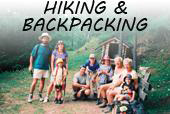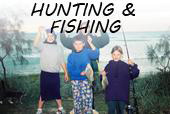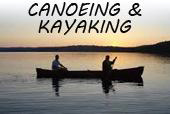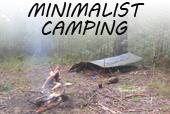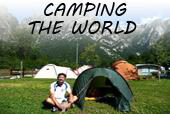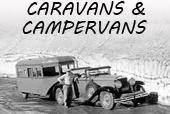The lighthouses of Cape Naturaliste in the north and Cape Leeuwin 135 kilometres below it mark the beginning and end of one of the most beautiful stretches of coastline Australia has to offer. While the majority of it is inaccessible by vehicle, the whole length of coast is traversed by the infamous Cape to Cape walking trail. This challenging six to seven day hike takes you along the towering cliffs and rockfaces that have been forged into amazing features by the crashing waves of the Indian Ocean. Remote beaches and thick coastal bush become the playground of those who undertake this spectacular journey.
To many people a six day hike is a bit of a push, and fortunately for them there are numerous access points down the track that enable people to go on shorter hikes of a day or even just a few hours. There are also a few inland loops on the track that break away from the coast and pass through sheltered woodland sections. One of these goes through the famous Boranup Karri forest, home to the third tallest tree in the world. Over 100 years old, the tall paper barked trees of the forest contrast with the rest of the coast.
A good days trek should consist of twenty to twenty five kilometres if you are going to complete the journey in six days. As most of the route is remote and isolated planning is essential. You will need to carry your camping gear and supplies with you. In the hot Western Australian weather water should be your most important consideration, and while you dont want to burden yourself with too much weight adequate water should always be carried. There are water sources down the length of the track in the form of rainfed tanks, or taps located in various townships. Between these and the freshwater creeks there should be enough to stop you getting thirsty, but caution is always wise.
For those undertaking the whole walk it is only a matter of preference whether you start at the north or the south lighthouse. Many start at Naturaliste and walk south, as this keeps the sun on their backs. The track initially takes you through dense coastal heath that merges into the rocky limestone ridges that border the blue Indian Ocean. Yallingup is a good place to spend your first night, there is a caravan park there and a large and popular surf beach to relax and rest your feet on. Down the length of the trail there are four free camping sites that are there especially for bush walkers. you are allowed to camp at any point along the track, but this is normally discouraged because the track is a sensitive landscape. There are also a number of commercial campgrounds and caravan parks, which obviously are not for free.
Before reaching the halfway point of Prevelly you will walk the sandy path adjacent to the long beach at Cape Clairault. You will also have walked past the famous surf beach of Indijup, renowned for its beach breaks. Perhaps the night before you camped down at Quininup Falls, a six metre high waterfall with a large splash pool at its base that is ideal for swimming. There really is an amazing amount to do and see on this trail, it is down to you to explore it. During the summer months the landscape erupts in a kaleidoscope of colour as the wildflowers that the region is famous for start to bloom. Boronias, daisies, pea-flowers and clematis are amongst the many varieties that flourish, and some visitors come from around the world primarily to see these beautiful flowers.
The second half of the walk, from Prevelly to Cape Leeuwin, is more isolated and you will see less people and buildings. It is no less spectacular however, and the rugged landscape is more likely to give you glimpses of local wildlife such as kangaroos and iguanas. If the season is right you can see pods of humpback whales rising to the surface off the coast, as they travel on their migratory routes. If you feel like a break from the trail, then when you reach Conto campground take the two kilometre walk inland to the Lake Cave. This cave consists of a long chamber built around a large pool. The still water of the pool reflects the stalactite formations on the roof above, creating an interesting effect. There are over 200 caves along the Cape to Cape trail, so it is worthwhile visiting at least one of them.
Nearing the end of the walk the Cape Leeuwin lighthouse rises up in the distance, beckoning you towards the conclusion of your trek. Standing on a headland that extends out into the sea, it is visible from miles away, so it will feel like it takes forever to reach it on your tired legs. The beauty of the lighthouse and the rocky coast around it is a fitting finale to the wonders encountered over the last few days, and the perfect ending to a rewarding excursion. If you are a keen bushwalker, or even if you are just keen on nature and scenery, then the Cape to Cape trail should definitely be on your list of things to do.






